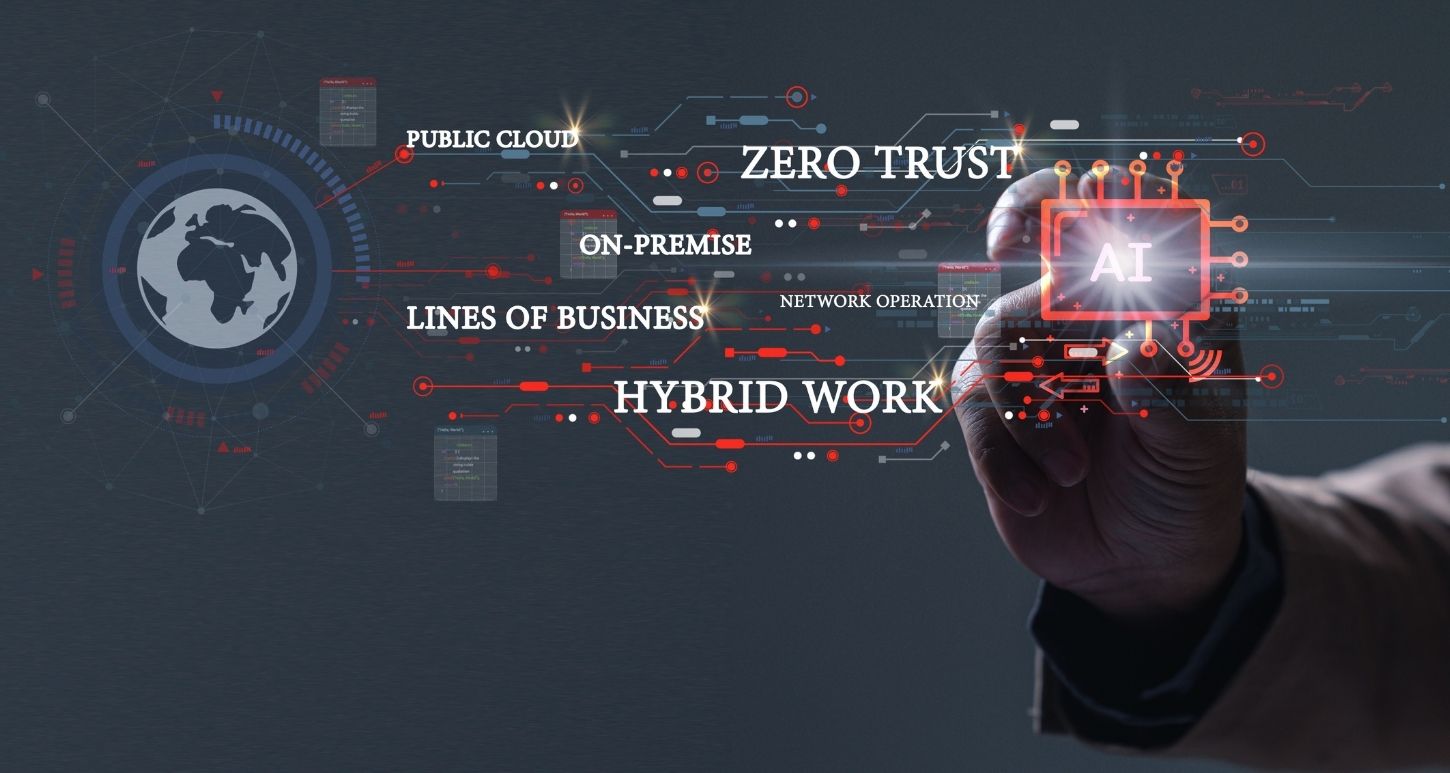What is cybersecurity?
Explore the practices, policies, methodologies, & technologies that comprise cybersecurity and how they help safeguard businesses.
Overview
Recommended for You
GDT Network and Security Assessment Saves Company ~$2M
Fortune 1000 Company Improves Security Posture and Saves Projected $2M with GDT Network and Security Assessment
Fortify Your Ransomware Defense Strategy: A Proven Framework - GDT
If you’re wondering if your organization’s ransomware defense strategy is as strong as it could be, you’re not alone.
GDT VP Leveraging AI & Machine Learning in Cybersecurity
As the head of GDT’s security practice and an industry veteran, Jeanne Malone and her team
AI and Data Security: 3 Critical Steps to Prevent Data Exposure - GDT
The advent of artificial intelligence (AI) brings transformative potential across industries while also introducing significant data security challenges.
Guard Against the “Elite Eight” Cybersecurity Threats of 2024 - GDT
Get insights to defend your organization against top cybersecurity threats.
What is cybersecurity?
Safeguarding your business in an evolving threat landscape has never been more critical. That’s where cybersecurity comes into play. Cybersecurity refers to the practices, policies, methodologies, and technologies used to safeguard digital assets, including systems, networks, programs, devices, financial assets, users, and data, from digital attacks, unauthorized access, human error, theft, damage, and more.
In today’s interconnected world, cyber threats have become increasingly sophisticated and commonplace, which means that cybersecurity solutions and services are crucial for individuals, businesses, and organizations to safeguard their digital assets and maintain privacy. Cybercrime is big business, with criminals working together to extort millions of dollars from companies through ransomware, phishing attacks, and other types of cyber attacks. Bad actors often focus on high-value targets like banks, governments, military branches, and large companies. Plus, they’re using the same sophisticated technologies that have evolved the business landscape, such as artificial intelligence and machine learning, to automate and streamline their activities.
Why is cybersecurity important?
Cybersecurity is essential to businesses because breaches can have devastating impacts, both from a cost perspective and a reputational one. Cybersecurity is vital to helping organizations protect sensitive data from theft and misuse. It helps prevent financial losses due to cybercrime, such as ransomware. Cybersecurity is essential to customer trust because customers expect businesses to keep their data safe. From a business continuity standpoint, cybersecurity also helps reduce the risk of systems downtime. Finally, cybersecurity helps organizations comply with data protection regulations.
What are common types of cybersecurity threats?
Some common types of cybersecurity threats include malware and ransomware, phishing attacks, stolen credentials, application program interface (API) attacks, advanced persistent threats (APTs), vulnerability exploits, insider threats, data breaches and exposures, and more. Other common cyber threats include Denial of Service (DoS) attacks, Man-in-the-middle (MitM) attacks, SQL injection, and zero-day exploits.
How can businesses improve their cybersecurity?
To safeguard their business, organizations must take a 360-degree, holistic approach to improving their cybersecurity posture. The ideal approach begins by completing an in-depth cybersecurity assessment to understand gaps and vulnerabilities and put a comprehensive plan in place that addresses prioritized concerns across the business. Tactics might include policy updates, breach protection tools, firewall updates, multi-factor authentication, network segmentation, regularly updating and patching systems, data encryption, and partnering with a trusted cybersecurity provider.
What is the difference between cybersecurity and information security?
While often used interchangeably, there are subtle differences. Cybersecurity focuses on protecting digital data and systems from cyber threats. Information security is broader, encompassing the protection of all information assets, whether digital or physical.
How often should cybersecurity measures be updated?
Cybersecurity measures should be continuously monitored and updated. Such measures might include daily updates to antivirus and anti-malware software, regular security patches, quarterly cybersecurity assessments, and comprehensive annual audits. Some organizations also choose to work with a trusted provider for managed security services to keep security measures up to date.
What is the role of artificial intelligence in cybersecurity?
Just as AI and machine learning have evolved the competitive business landscape, they’ve also evolved the threat landscape. Today’s bad actors employ AI and machine learning to automate and accelerate attacks, which is why it’s important for businesses to leverage AI and machine learning to thwart bad actors. AI plays an increasingly important role in cybersecurity by detecting and responding to threats in real time. AI-enabled breach protection allows organizations to analyze large volumes of data to identify patterns and anomalies and predict and prevent future attacks. AI can also help automate routine security tasks.
Why GDT for cybersecurity?
By understanding these cybersecurity basics, you’re taking the first step toward protecting your digital assets. For a comprehensive cybersecurity strategy tailored to your business needs, contact GDT today. At GDT, we offer comprehensive security solutions to protect your digital infrastructure and empower your business to thrive in the face of evolving cyber threats.
Recent Insights

- By Casey Gager
In a world where bad actors employ increasingly sophisticated technologies to wreak havoc, organizations are looking beyond traditional perimeter approaches in favor of a Zero Trust strategy. Remote and hybrid work, increased reliance on managed services and third parties, and a rapidly evolving threat landscape comprise just some of the

- By Robert Davila
If you’re wondering if your organization’s ransomware defense strategy is as strong as it could be, you’re not alone. Ransomware has emerged as one of the top cybersecurity threats you need to be concerned about, with an average cost of $4.45 million per incident. According to Verizon, about a third

- By Hans-Peter Schwebler
Transport layer security (TLS) is one of the most common tools for keeping users safe on the internet. When automated, TLS certification management can help organizations ensure more reliable and consistent use of TLS, reducing the need for human intervention and risk of human error. In fact, over the years,

